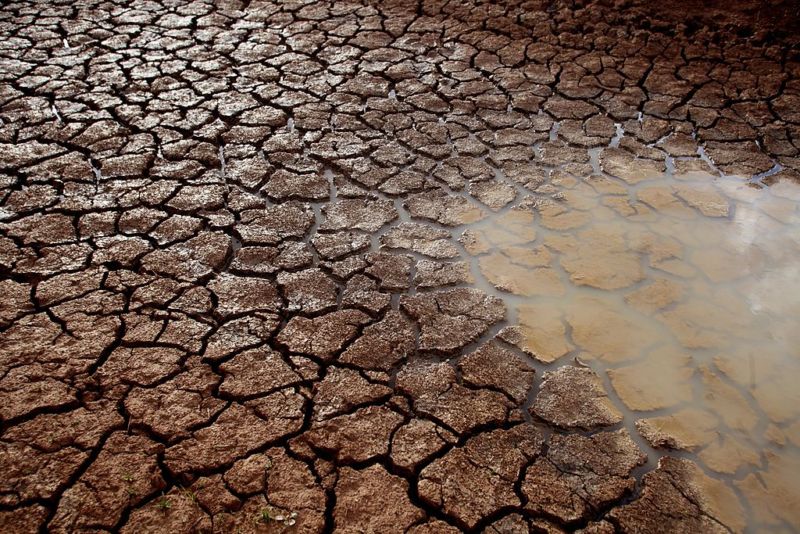
All living creatures need water to survive. Unfortunately, due to climate and human activity, the location of water on the earth’s surface constantly changes, as water bodies form, shift, and empty. The results can prompt species migrations and threaten societal growth and productivity. So keeping track of this liquid situation is critical.
Although there are several global datasets documenting surface water location and seasonality, scientists have struggled to measure long-term changes at high resolution. Now, a team of scientists has used more than 3 million satellite images to evaluate changes in global surface water over the past three decades. What they found are some big changes: almost 90,000 km2 of surface water—roughly equivalent to the area of Lake Superior—have completely vanished, mostly from the Middle East and Central Asia. Yet, 184,000 km2 of permanent water area formed elsewhere in the world.
The findings, published in Nature, offer a striking look at past surface water movements. Yet, the researchers hope that the data will improve predictions of future movements as human activity and climate change continue.
-
Map of the distribution and change in surface water over 32 years from more than 3 million Landsat satellite images. The map shows the Paraná River in Northeastern Argentina and shows how rivers meander and move, floodplains flood intermittently, and new areas of permanent and seasonal water are being created and lost through time.European Commission - Joint Research Centre, 2016
-
This map shows the upper stretches of the Yenisei River (Река Енисей) in Russia and captures the spatial and temporal patterns in surface water. Dark blue colors are areas of permanent water and the pink colors show areas where water occurs less often.European Commission - Joint Research Centre, 2016
-
This map shows an inlet in the south of the Bird’s Head Peninsula in West Papua, Indonesia and captures the spatial and temporal patterns in surface water. Dark blue colors are areas of permanent water and the pink colors show areas where water occurs less often.European Commission - Joint Research Centre, 2016
-
This map shows Poyang Lake (鄱陽湖) in Jiangxi Province, China and captures the spatial and temporal patterns in surface water. Dark blue colors are areas of permanent water and the pink colors show areas where water occurs less often.European Commission - Joint Research Centre, 2016
-
This map shows the River Ob (Река Обь) in western Siberia, Russia and captures the spatial and temporal patterns in surface water.European Commission - Joint Research Centre, 2016
-
This map shows Lake Gairdner National Park in Southern Australia and captures the spatial and temporal patterns in surface water.European Commission - Joint Research Centre, 2016
For their analysis, the investigators classified each pixel of satellite data (representing 1.823 petabytes of landsat satellite data) as open water, land, or non-valid observation. They defined open water as any stretch of water (fresh or salt) larger than 30m by 30m open to the sky.
Their analysis revealed the presence of 2.78 million km2 of water in 2015. Eighty-six percent of these water bodies remained present across the entire observation record; these water bodies represent the truly permanent waters of the world, such as North America’s Great Lakes.
The researchers determined that more than 162,000 km2 of water thought to be permanent actually are not permanent. Of this area, almost 90,000 km2 of water have completely vanished and another 72,000 km2 of water are now thought to be only seasonal.
New areas of permanent water also appeared. For example, approximately 29,000 km2 of land that used to exhibit seasonal flooding now remains underwater year-round. An additional 184,000 km2 of water formed permanent bodies in areas that did not previously have surface water.
Beyond the global tallies, the investigators also evaluated water patterns for each continent.
The area of permanent water increased on every continent except for Oceania, which shows a 1 percent net loss. The team believes the continental increases are likely from reservoir filling, though they suspect climate change had an influence.
More than 70 percent of the global net losses of permanent water occurred in the Middle East and Central Asia over the three-decade period. The team speculated that human activities such as river diversion, damming, and unregulated water withdrawal may be causes. By contrast, losses in Australia and the USA have been attributed to climate-related issues such as long-term droughts. Still, almost 52 percent of the planet’s truly permanent surface water resides in North America. The continent also holds 18 percent of seasonal water.
In total, the analysis provides a unique long-term understanding of changes in global surface waters. A better understanding of how climate change and human activity influence these changes over time could lead to more effective water-management decision making.
Nature, 2016. DOI: 10.1038/nature20584 (About DOIs).
reader comments
61